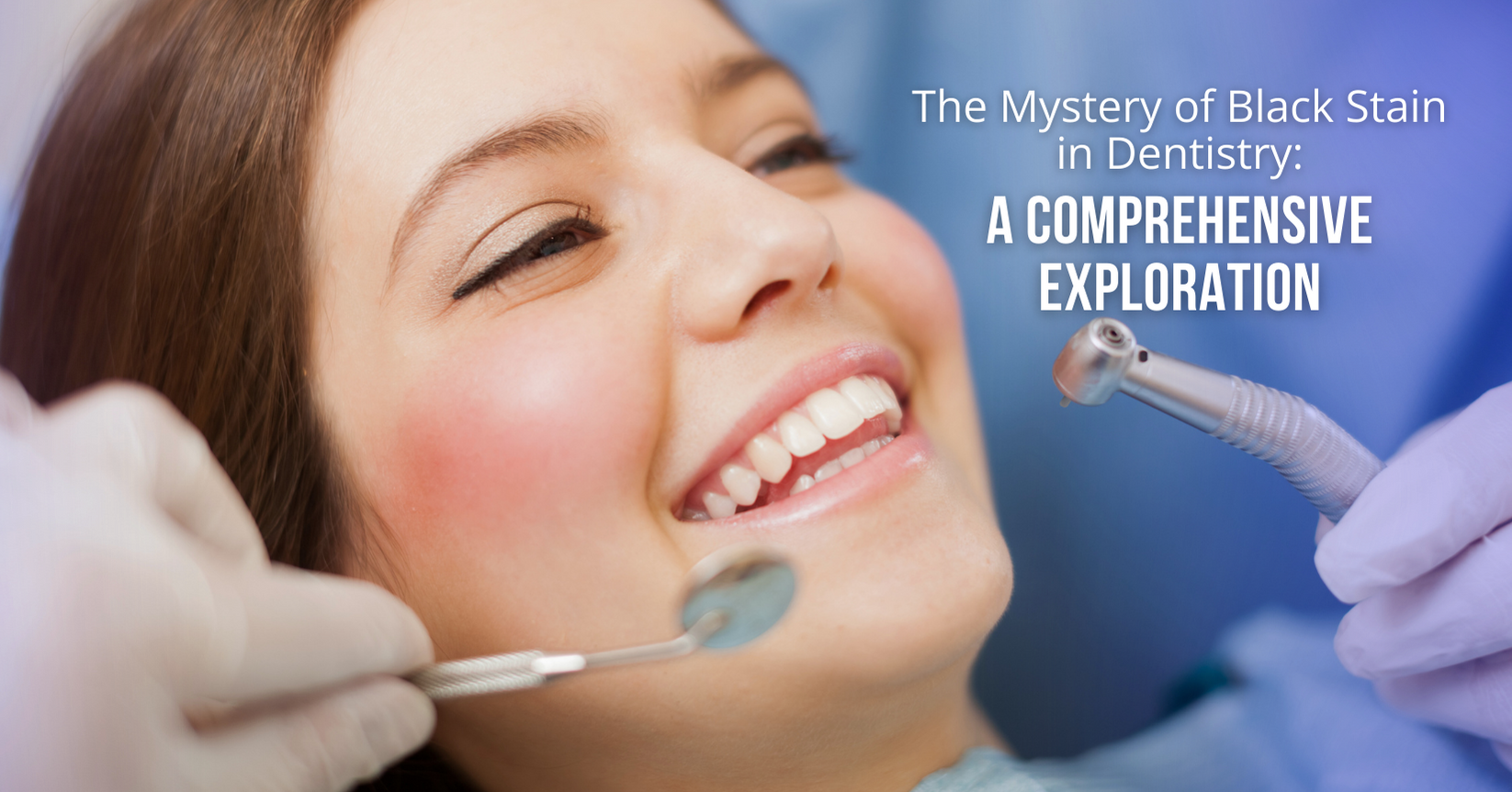Menu

Introduction
Tooth discoloration, a prevalent issue among patients, frequently raises aesthetic concerns. Among the various types of extrinsic staining, black stain stands out as a particularly enigmatic and common occurrence. Manifesting as a distinctive black pigmentation along the cervical third of buccal and/or lingual tooth surfaces, this condition, also known as chromogenic or pediatric staining, has implications for both children and adults. Despite its prevalence, ranging from 2-20% in different studies, black stain remains poorly understood, contributing to its challenging diagnosis and management.
Aetiology
The origins of black stain remain elusive, with ultrasonic investigations suggesting a unique type of dental plaque with a propensity to calcify. Microbial composition analysis indicates the presence of chromogenic bacteria, such as actinomyces and prevotella melaninogenic. Interestingly, studies suggest a reduced prevalence of caries in the presence of black staining. The pigmentation itself is believed to be a
form of bacterial plaque containing insoluble ferric salts, particularly ferric sulphide, formed through the interaction between bacteria-produced hydrogen sulphide and iron in saliva or gingival exudate. Certain dietary factors, such as the consumption of iron-rich vegetables, dairy products, and fruits, may contribute to an increased prevalence of black stain.
Clinical Features
Black staining is a distinctive form of extrinsic discoloration, characterized by non-cavitated dark dots along the cervical third of teeth. Typically found near the gingival margin, it does not extend to proximal areas and often appears more prevalently on the lingual surfaces of mandibular teeth due to their proximity to salivary glands. Understanding these clinical features is crucial for accurate diagnosis and differentiation from other types of tooth discoloration.
Differential Diagnosis
Distinguishing black stain from other forms of tooth discoloration is imperative. Extrinsic staining, arising from chromogens deposited on the tooth’s external surface, includes causes such as tea, coffee, smoking, poor oral hygiene, and certain medications. Intrinsic discoloration, involving changes to internal structural composition, encompasses conditions like amelogenesis imperfecta and tetracycline staining. Differentiating black stain from caries is crucial, as the former can be removed through instrumentation or polishing, unlike the irreversible decalcification seen in caries.
Treatment Options and Planning
Holistic treatment of black staining begins with patient education, emphasizing its non-permanent nature and common occurrence in developing dentition. Patients should be cautioned against aggressive brushing and reassured that simple procedures, like scaling and polishing, can effectively remove the stain. A careful approach is needed for stains on pitted and grooved areas, as they may pose challenges during removal. To get rid of recurring teeth stains in adults, professional teeth whitening treatments, and home care teeth whitening products, such as pyrophosphate containing teeth whitening toothpastes are available. You should consult your dentist to know which is the best way to whiten your teeth and they will advise you best stain prevention methods and also prescribe teeth whitening toothpastes for your stained teeth.
Conclusion
In conclusion, black stain poses a common challenge in dental practice, necessitating a thorough understanding for accurate diagnosis and effective treatment. This article sheds light on the enigmatic nature of black stain, emphasizing the importance of proper patient education and cautious clinical interventions to enhance both aesthetics and self-esteem. As further research emerges, a more evidence-based approach to diagnosis and treatment may evolve, refining the strategies employed by dental professionals in managing this intriguing dental phenomenon.
References:


| PRODUCTS | QTY | PRICE | VALUE in INR |
|---|
| PRODUCTS | QTY | PRICE | VALUE in INR |
|---|